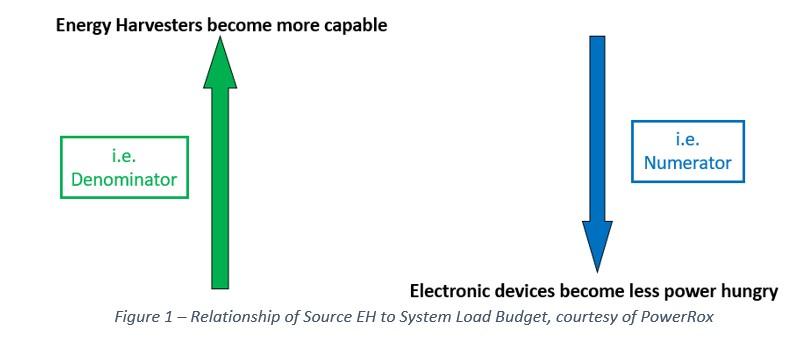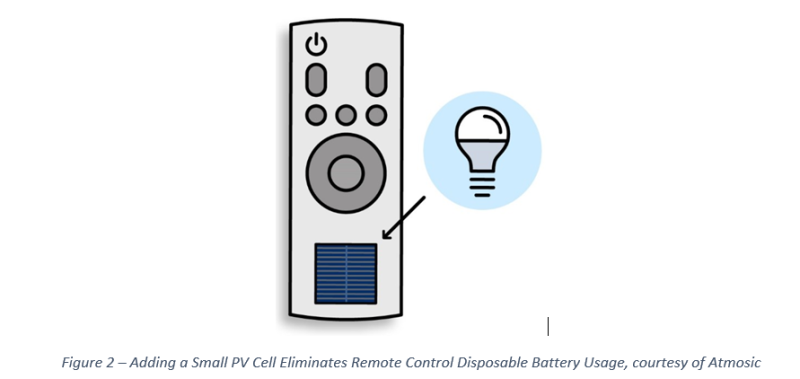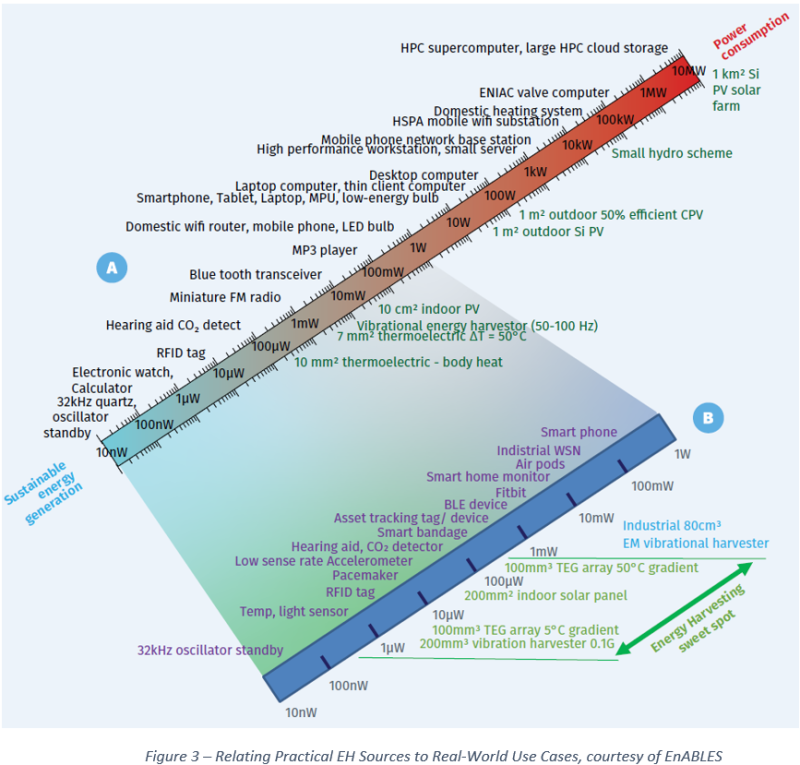As a frequent author, purveyor, and overall, enthusiastic evangelist of energy harvesting (EH) (and related) technologies, which we also refer to as the Power IoT Ecosystem, I can tell you these are very exciting times. Not even a decade ago, one would practically be laughed out of the room for referring to EH in this manner. These days, there is more attention than ever being paid to sustainability and the foresight of the many billions or trillions of devices we hear about all the time quickly translating to the disposal of ~100 M non-rechargeable (a.k.a. – primary) batteries EVERY DAY!!! Some of the more fundamental aspects of EH were quickly reviewed in this short article from last year.
It is great to see conversations shifting from “What is EH?” and “Why would I bother with that EH stuff?” to “How can I greatly extend my rechargeable battery life?” and “Can you make my product self-powered or ‘set and forget forever powered’?” It seems we are approaching a key milestone in which skepticism and reluctance have now morphed into acceptance and curiosity from design engineers looking to apply these game-changing technologies to the products being developed on their benches.
At this point, it is quite salient to highlight the fact these palpable shifts in the electronics industry toward consideration of EH solutions are not purely attributed to bleeding-edge, revolutionary technology on the EH-side (or source-side) of the energy equation. While advancement has certainly been facilitated by material science increasing the amount of extractable energy from EH-source modalities and the integration of controllers and power electronics into application-specific power management integrated circuits (PMIC), the truly enabling trend has been driven by the massive reduction of system power budgets on the load side. In other words, Moore’s Law and micro-electromechanical systems (MEMS) are bringing the system energy demands down much faster than chemistry/physics are increasing energy storage density. One may not believe just how much work can be done with a 1 mW power budget these days.

While the majority of applications in the EH space seem to focus on tiny, Internet of Things (IoT) smart devices or ubiquitous, wireless sensor networks (WSN), it is very refreshing to see consumer-grade devices that people can identify with easier. Asset tags and conditional monitoring may be common in Industrial IoT (IIoT) use cases, but it is far less common to associate small-scale EH (i.e. – not big solar photovoltaic or PV arrays or wind generators stretching as far as the eye can see) with day-to-day applications, with a handful of notable exceptions. Most people may think of a basic calculator or a PV/wound wristwatch or that first transistor radio built from a kit as a kid, but there is a new generation of household devices being designed with perpetual, ambient EH power sources in mind. An example of this is a remote control that eliminates the disposable batteries with the use of only indoor PV power.

A recent EU publication from the EnABLES EU ‘power IoT’ project gives good insight into real-life examples as shown in the figure below. Not only does this diagram depict a mapping of EH technologies to common power levels and complementary applications, but it uniquely does so in such a way that it highlights the “EH sweet spot” to help match the EH to the load IN THE OPERATING ENVIRONMENT, which is the key observation.

It can take a village of subject-matter experts and a team of multidisciplinary stakeholders to come together and summarize so many of the challenges, learnings, and best practices associated with the multiple-block-elements of an EH-based design. One cannot get from concept to a shipping design by merely observing talks from a handful of applicable players (from industry and academia), but rather must have a focused set of educational presentations. Furthermore, all these presentations must have a logical flow so there is a semblance of order and process to accelerate one’s approach to systems utilizing scavenged, often intermittent, energy sources.
Brian Zahnstecher is a Sr. Member of the IEEE, Chair (Emeritus) of the IEEE SFBAC Power Electronics Society (PELS), IEEE PELS North America Regional (R1-3) Chair, sits on the Power Sources Manufacturers Association (PSMA) Board of Directors, is Co-founder & Co-chair of the PSMA Reliability Committee, Co-chair of the PSMA Energy Harvesting Committee, and is the Principal of PowerRox. He Co-chairs the IEEE Future Directions (formerly 5G) Initiative webinar series and is the founding Co-chair of the IEEE 5G Roadmap Energy Efficiency Working Group and has lectured on this topic at major industry conferences. He previously held positions in power electronics with industry leaders Emerson Network Power (now Advanced Energy), Cisco, and Hewlett-Packard. He has been a regular contributor to the industry as an invited keynote speaker, author, workshop participant, session host, roundtable moderator, and volunteer. He has nearly 20 years of industry experience and holds Master and Bachelor degrees from Worcester Polytechnic Institute.